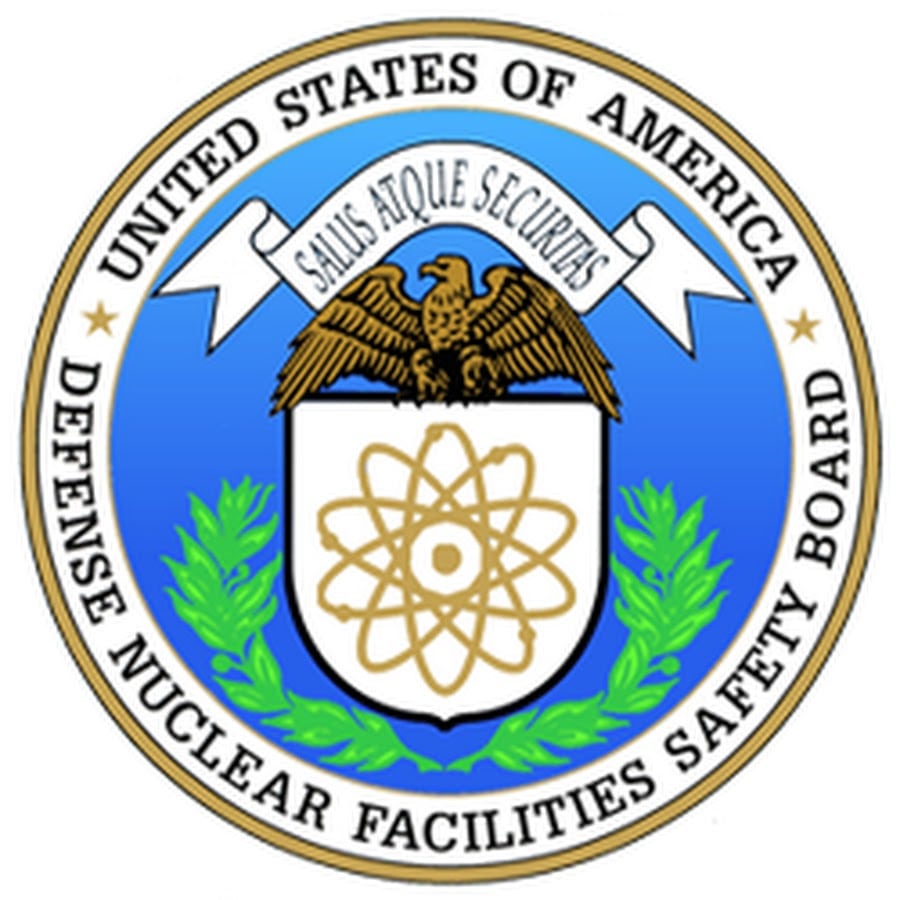
WASHINGTON, D.C. – While the Energy Department’s top nuclear cleanup manager said Wednesday her office will not use a new agency order to thwart oversight by the Defense Nuclear Facilities Safety Board (DNFSB), members of the panel remained apprehensive.
Order 140.1, issued in May, will not change the relationship between DOE’s Office of Environmental Management and its independent nuclear safety watchdog, according to Assistant Secretary for Environmental Management Anne Marie White.
While the DNFSB, created in 1988, has no enforcement teeth, it can make safety recommendations to the Energy Department. The energy secretary then must publicly agree or disagree.
The DNFSB monitors safety at defense nuclear sites, including those undergoing environmental remediation through White’s office. The two parties have long had a good relationship, and the board’s “independent” analysis and advice is important to safe operations, she said during a DNFSB public hearing on the new order.
To illustrate the strength of the relationship, White said her office “satisfied” 2,000 information requests from the DNFSB during the 2018 fiscal year, and about half of those came after the DOE order was issued in mid-May.
The department’s order says “consolidated DOE positions on policy” should be reached before interacting with the board, so the department will “speak with one voice” to DNFSB. The order also says DNFSB requests for information from government contractors should be routed through a DOE liaison officer. The board members generally didn’t like the idea of the liaison becoming a gatekeeper between DNFSB and DOE contractors.
The order says records sought by DNFSB can be denied for various reasons, ranging from lack of appropriate security clearance or the “person requesting the information does not need such access” in connection with their duties.
While Order 140.1 prevents DNFSB from venturing into public safety outside of DOE site boundaries, all off-site issues get their start on-site, Kathy Crandall Robinson, who spoke on behalf of California-based Tri-Valley Communities Against a Radioactive Environment and the Alliance for Nuclear Accountability.
There are about 100 full-time DNFSB staffers, including eight resident inspectors at five DOE nuclear weapons and cleanup sites — the Hanford Site in Washington state, Los Alamos National Laboratory in New Mexico, Savannah River Site in New Mexico, Pantex Plant in Texas, and the Y-12 National Security Complex in Tennessee.
Over the years, the DNFSB has made dozens of formal recommendations to DOE on topics ranging from emergency preparedness at Pantex to the safety culture at the Waste Treatment Plant being built at Hanford.
The Office of Environmental Management has no intention of denying board inspectors access to certain properties, White said. The order “is not intended to preclude the board from doing your job,” she added. At the same time, “DOE cannot abdicate our responsibility to manage the risk” in its remediation operations.
But members of DNFSB, its staff, and the public said the plain language of the order could be used to limit the board’s prompt access to key Energy Department records and meetings deemed deliberative. The Energy Department, not the board, would have final say on what documents and meetings are deliberative, although White said the two parties can have discussions when disagreements occur.
Acting DNFSB Chairman Bruce Hamilton said his view has changed little since a prior hearing in August with other DOE officials, including Deputy Energy Secretary Dan Brouillette. “I like what I hear from the Department of Energy on this order. I don’t like what I read.”
“I understand all of you are saying there is no change [in existing policy]. But a literal reading of the order indicates there is change,” said DNFSB member Daniel Santos.
While the DNFSB will still have access to most of the records it sees now, it is not likely to be timely access given board representatives can be banned from pre-decisional meetings, according to Santos and other board members. Going forward, DNFSB employees will know they are working with an order that reduces their authority to access certain information, he added.
What makes something pre-decisional is not defined and can be taken in many ways, board member Joyce Connery said.
When it comes to draft reports, for example, “we reserve the right to control the information in the pre-decisional phase,” White said. This should keep Environmental Management and the DNFSB from spending time on interim recommendations that might never be enacted, the cleanup chief said.
While Connery said DNFSB personnel merely observe pre-decision meetings now, they become more fully informed by being in the room, she added.
An internal deliberatively process allows DOE’s subject matter experts to freely discuss ideas, White said. The cleanup chief also said the order affects only DOE employees in their interaction with DNFSB, it does not try to set policy for the board.
Both White and Jay Mullis, who heads EM operations for the Oak Ridge Site in Tennessee, said the DNFSB will continue to be welcomed at fact-finding meetings held after accidents or other unusual events.
Information gleaned by the DNFSB has provided the public with more transparency about Energy Department facilities, said Crandall Robinson.
Board members also noted DNFSB was not formally included in discussions about the DOE order before it was issued, although Hamilton as acting chairman received an email regarding his concerns before the document was published.
The issue is not about a “power struggle” between DOE and the board, said DNFSB member Jessie Hill Roberson. It is instead about doing everything possible to protect health and safety of people around DOE sites, she added.
Another DNFSB hearing on Order 140.1 is scheduled in February 2019 in New Mexico, although no date has yet been selected.